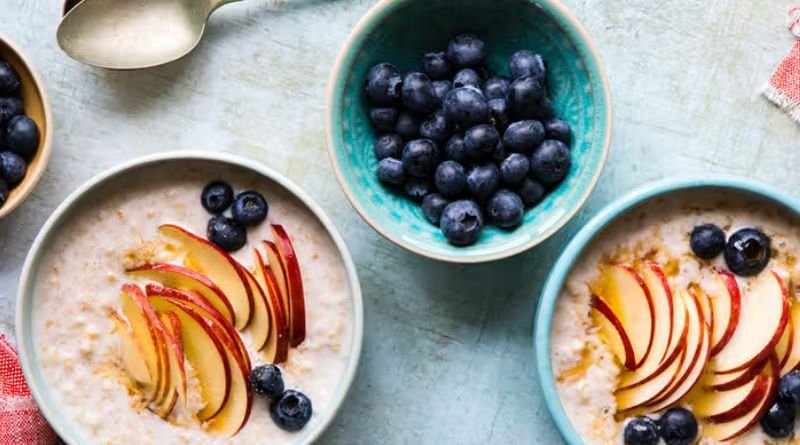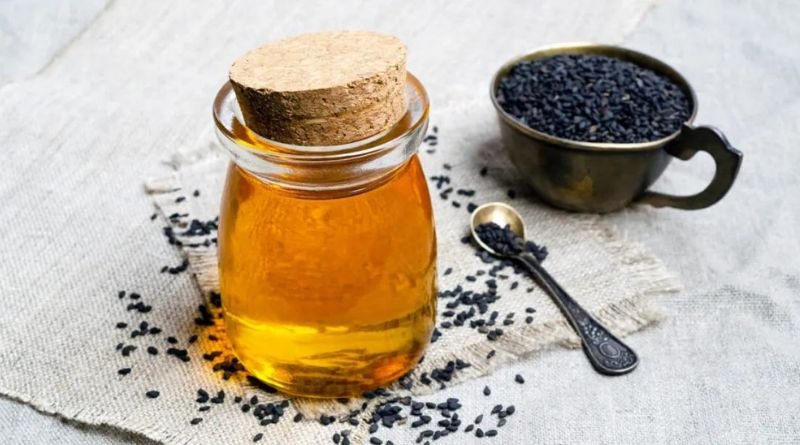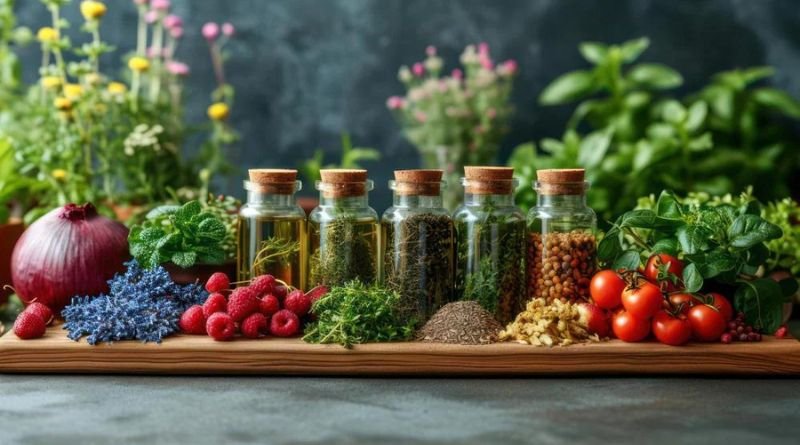22 High Fiber Foods You Should Eat

Incorporating high fiber foods into your diet is essential for maintaining good health. Fiber plays a crucial role in digestive health, aids in weight management, and can help reduce the risk of chronic diseases. In this article, we’ll explore 22 high fiber foods that you should consider adding to your diet. Each of these foods is not only rich in fiber but also packed with other essential nutrients that contribute to overall well-being.
What is Dietary Fiber?
Dietary fiber, also known as roughage, is the indigestible part of plant foods. Unlike other nutrients, fiber isn’t absorbed by the body but passes relatively intact through your digestive system. It is classified into two types: soluble and insoluble. Soluble fiber dissolves in water to form a gel-like substance, which can help lower blood cholesterol and glucose levels. Insoluble fiber, on the other hand, promotes the movement of material through your digestive system and increases stool bulk, which can help with constipation or irregular stools.
Benefits of a High Fiber Diet
A high fiber diet offers numerous health benefits:
- Digestive Health: Fiber helps in maintaining bowel health, preventing constipation, and reducing the risk of developing hemorrhoids and diverticulosis.
- Weight Management: High fiber foods are more filling, which can help you eat less and stay satisfied longer, aiding in weight management.
- Heart Health: Fiber, particularly soluble fiber, can help lower cholesterol levels, thereby reducing the risk of heart disease.
- Blood Sugar Control: Fiber can slow the absorption of sugar, helping improve blood sugar levels and reducing the risk of developing type 2 diabetes.
- Cancer Prevention: A high fiber diet is linked with a lower risk of developing colorectal cancer.
Now, let’s delve into the 22 high fiber foods you should eat to ensure you’re getting enough of this vital nutrient.
1. Beans
Beans, including black beans, kidney beans, and navy beans, are incredibly high in fiber. One cup of cooked beans can provide up to 15 grams of fiber. They are also rich in protein, making them a great meat substitute for vegetarians and vegans.
2. Lentils
Lentils are another excellent source of fiber, with one cup of cooked lentils offering about 15.6 grams. They are also packed with protein, iron, and potassium, making them a nutritious addition to soups, stews, and salads.
3. Chickpeas
Chickpeas, or garbanzo beans, provide about 12.5 grams of fiber per cup. They are versatile and can be used in salads, soups, or blended into hummus. Chickpeas are also a good source of protein and other essential nutrients.
4. Chia Seeds
Chia seeds are tiny but mighty when it comes to fiber content. Just two tablespoons of chia seeds contain about 10 grams of fiber. They can be added to smoothies, yogurt, or used to make chia pudding for a fiber-rich snack.
5. Flaxseeds
Flaxseeds are another small seed packed with fiber, offering around 7.6 grams per two tablespoons. They are also rich in omega-3 fatty acids, which are beneficial for heart health. Ground flaxseeds can be added to smoothies, baked goods, or sprinkled over cereal.
6. Quinoa
Quinoa is a high-fiber grain alternative that provides around 5.2 grams of fiber per cup when cooked. It is also a complete protein, containing all nine essential amino acids, making it a great choice for vegetarians and vegans.
7. Whole Wheat Pasta
Whole wheat pasta is a fiber-rich alternative to regular pasta. One cup of cooked whole wheat pasta contains about 6.3 grams of fiber. It is a nutritious choice for those looking to increase their fiber intake while enjoying their favorite pasta dishes.
8. Oats
Oats are a great source of soluble fiber, particularly beta-glucan, which is known to help lower cholesterol levels. One cup of cooked oats provides around 4 grams of fiber. Enjoying a bowl of oatmeal for breakfast is an excellent way to start your day with a fiber boost.
9. Barley
Barley is a high-fiber grain that provides about 6 grams of fiber per cup of cooked barley. It is also rich in vitamins and minerals, making it a nutritious addition to soups, stews, and salads.
10. Brown Rice
Brown rice is a whole grain that is higher in fiber compared to white rice. One cup of cooked brown rice offers around 3.5 grams of fiber. It is a versatile side dish that pairs well with various main courses.
11. Avocado
Avocado is not only a good source of healthy fats but also high in fiber, with one medium avocado containing around 10 grams. It can be added to salads, smoothies, or enjoyed as a spread on toast.
12. Pears
Pears are a delicious fruit that provides about 5.5 grams of fiber per medium-sized fruit. They are also rich in vitamins and antioxidants, making them a healthy snack or addition to salads.
13. Apples
Apples are another fruit high in fiber, offering about 4.4 grams per medium-sized apple. They are also low in calories and high in vitamin C, making them a nutritious and convenient snack.
14. Raspberries
Raspberries are one of the highest-fiber fruits, with one cup providing around 8 grams of fiber. They are also rich in antioxidants and vitamin C, making them a healthy addition to your diet.
15. Bananas
Bananas are a convenient and portable fruit that offers about 3.1 grams of fiber per medium-sized banana. They are also rich in potassium, which is important for heart health and blood pressure regulation.
16. Broccoli
Broccoli is a nutrient-dense vegetable that provides about 5.1 grams of fiber per cup when cooked. It is also rich in vitamins, minerals, and antioxidants, making it a great choice for a healthy diet.
17. Brussels Sprouts
Brussels sprouts are a cruciferous vegetable that offers about 4 grams of fiber per cup when cooked. They are also high in vitamins K and C, as well as other essential nutrients.
18. Carrots
Carrots are a crunchy and sweet vegetable that provides about 3.6 grams of fiber per cup when raw. They are also high in beta-carotene, which is important for eye health.
19. Sweet Potatoes
Sweet potatoes are a nutritious and fiber-rich root vegetable, offering about 6.6 grams of fiber per cup when cooked. They are also high in vitamins A and C, making them a healthy addition to your meals.
20. Spinach
Spinach is a leafy green vegetable that provides about 4 grams of fiber per cup when cooked. It is also rich in iron, calcium, and other essential nutrients, making it a nutritious choice for salads, soups, and smoothies.
21. Artichokes
Artichokes are one of the highest-fiber vegetables, with one medium artichoke providing around 6.9 grams of fiber. They are also rich in antioxidants and vitamins, making them a healthy addition to your diet.
22. Almonds
Almonds are a high-fiber nut, offering about 3.5 grams of fiber per ounce (approximately 23 almonds). They are also rich in healthy fats, protein, and various vitamins and minerals, making them a nutritious and convenient snack.
How to Incorporate High Fiber Foods into Your Diet
Incorporating high fiber foods into your diet doesn’t have to be difficult. Here are some tips to help you increase your fiber intake:
- Start Your Day with Fiber: Choose high-fiber breakfast options such as oatmeal topped with fruits and nuts or a smoothie made with chia seeds and spinach.
- Snack Smart: Opt for fiber-rich snacks like fresh fruit, raw vegetables with hummus, or a handful of nuts.
- Add Beans and Lentils: Incorporate beans and lentils into soups, stews, salads, and side dishes to boost your fiber intake.
- Choose Whole Grains: Replace refined grains with whole grains like brown rice, quinoa, and whole wheat pasta.
- Include Vegetables in Every Meal: Add a variety of vegetables to your meals, whether in salads, stir-fries, or as side dishes.
- Eat the Skin: Whenever possible, eat the skin of fruits and vegetables as they are often high in fiber.
Conclusion
Incorporating these 22 high fiber foods into your diet can significantly improve your overall health. From promoting digestive health to reducing the risk of chronic diseases, the benefits of a high fiber diet are numerous. By making simple changes to your meals and snacks, you can easily increase your fiber intake and enjoy the many health benefits it offers. Remember to increase your fiber intake gradually and drink plenty of water to help your body adjust. Enjoy exploring new recipes and flavors as you incorporate these high fiber foods into your daily routine.







